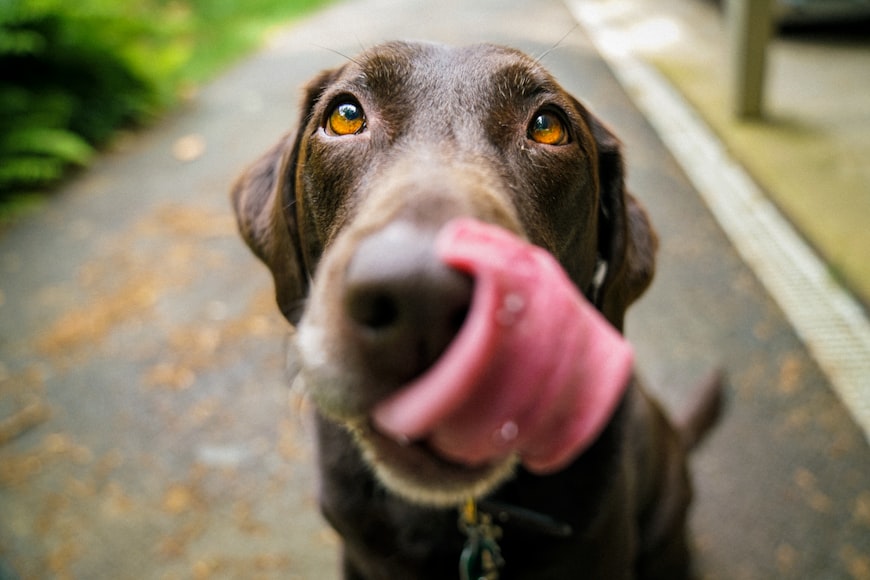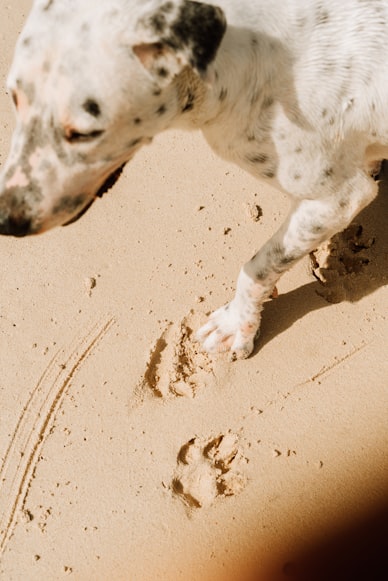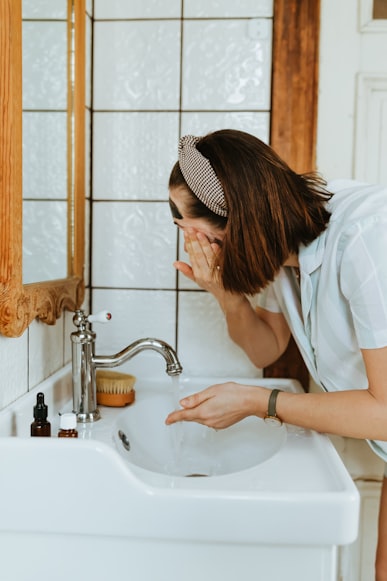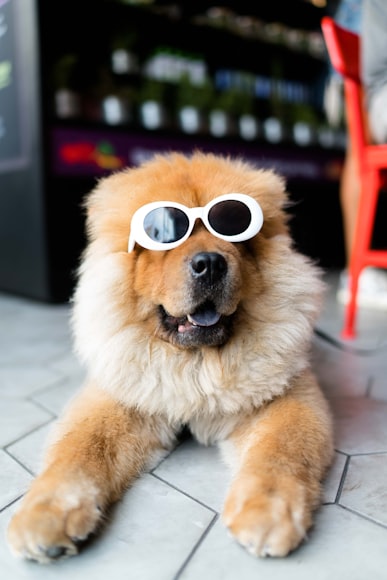How to Get Rid of Hot Spots on Dogs

Hot spots, also known as pyotraumatic dermatitis or moist dermatitis, are a common skin condition that affect dogs. They appear as red, swollen, and moist areas on the skin, often accompanied by pus and crusting. Hot spots can be extremely uncomfortable for dogs and, if left untreated, can lead to serious infections.
Causes of Hot Spots
Hot spots can be caused by a variety of factors, including:
- Allergies: Food, environmental, or contact allergies can cause itching and irritation, which can lead to hot spots.
- Parasites: Fleas, ticks, or mites can irritate the skin and cause dogs to itch and bite, resulting in hot spots.
- Bacterial infections: Bacteria, such as Staphylococcus aureus, can infect the skin and cause hot spots.
- Moisture: Excessive moisture, such as from wet grass or a damp environment, can create a favorable environment for bacteria and hot spots to develop.
Symptoms of Hot Spots
Hot spots typically appear as round or oval-shaped areas of redness, swelling, and moisture. They may be accompanied by:
- Pus: A thick, yellowish discharge
- Crusting: A layer of dead skin cells and dried pus
- Itching: Dogs may scratch or lick the affected area excessively
- Pain: Hot spots can be painful and cause discomfort
Treatment of Hot Spots
The treatment for hot spots depends on the underlying cause. In most cases, a combination of topical and systemic treatments is necessary.
1. Topical Treatments:
- Antibiotics: Topical antibiotics are used to kill bacteria and prevent infection.
- Antiseptic washes: Antiseptic washes can help cleanse the skin and remove bacteria.
- Hydrocortisone cream: Hydrocortisone cream can reduce inflammation and itching.
2. Systemic Treatments:
- Oral antibiotics: Oral antibiotics are used to treat bacterial infections that have spread beyond the skin.
- Antihistamines: Antihistamines can help relieve itching associated with allergies.
- Pain relievers: Pain relievers can help reduce discomfort and inflammation.
3. Home Care:
- Keep the area clean: Regularly clean the hot spot with an antiseptic wash and apply topical medications as directed.
- Prevent scratching: Use an Elizabethan collar (cone) to prevent dogs from scratching or licking the hot spot.
- Manage moisture: Keep the area dry and clean. Avoid allowing dogs to sit in wet areas or roll in the grass.
- Monitor for improvement: Monitor the hot spot for signs of improvement or worsening. If the condition does not improve or gets worse, consult with a veterinarian.
Prevention of Hot Spots
The following measures can help prevent hot spots in dogs:
- Regular grooming: Brush your dog regularly to remove loose hair and debris.
- Parasite control: Use flea and tick preventatives regularly to prevent infestations.
- Avoid allergens: Identify and avoid allergens that trigger itching in your dog.
- Maintain a clean environment: Keep your dog’s bedding, toys, and surroundings clean.
- Reduce stress: Provide your dog with plenty of exercise, mental stimulation, and affection to reduce stress.
Conclusion
Hot spots are a common but treatable skin condition in dogs. By understanding the causes, symptoms, and treatment options, you can help your dog recover from hot spots and prevent them from developing in the future. If you notice any signs of a hot spot on your dog, it is important to seek veterinary attention promptly to receive proper diagnosis and treatment.
Identify the Hot Spot:

Hot spots, also known as acute moist dermatitis, are common skin conditions that affect dogs. They are localized areas of inflammation and infection that can cause significant discomfort and itching. If left untreated, hot spots can become chronic and spread to other parts of the dog’s body.
Causes of Hot Spots
Hot spots can be caused by a variety of factors, including:
- Allergies
- Parasites (fleas, ticks, mites)
- Bacterial or fungal infections
- Contact with irritants (plants, chemicals)
- Excessive licking or scratching due to skin irritation or underlying medical conditions
Identifying a Hot Spot
The first step in treating a hot spot is to identify it accurately. Hot spots typically appear as:
- Red, inflamed areas on the dog’s skin
- Moist or oozing lesions
- Well-defined borders
- Circular or oval in shape
- Located in areas where the dog can easily lick or scratch, such as the head, legs, and tail base
Treating Hot Spots
Treating hot spots involves a combination of steps to address the underlying cause and alleviate the symptoms.
1. Medical Examination
Consult a veterinarian to confirm the diagnosis and determine the underlying cause of the hot spot. This may involve physical examination, skin scrapings, or blood tests.
2. Cleaning and Disinfection
Thoroughly clean the hot spot with a mild antiseptic solution. Use a warm, damp cloth or cotton balls to gently remove any crust or debris. Avoid using harsh chemicals or soaps, as they can further irritate the skin.
3. Medications
Veterinarians may prescribe topical or oral medications to treat the infection and reduce inflammation. These may include antibiotics, antifungals, or steroids.
4. Elizabethan Collar
An Elizabethan collar, also known as an e-collar, is a cone-shaped device placed around the dog’s neck to prevent it from licking or scratching the hot spot. This is crucial to allow the wound to heal properly.
5. Topical Treatments
Topical ointments, creams, or sprays can help soothe the affected area and prevent further irritation. Veterinarians may recommend products containing aloe vera, oatmeal, or hydrocortisone.
6. Environmental Management
If the hot spot is caused by an allergy or external irritant, identify and remove the trigger from the dog’s environment. This may involve using flea and tick preventatives, changing food, or avoiding contact with certain plants or chemicals.
Prevention
Preventing hot spots is essential for maintaining a healthy dog’s skin. Here are some tips:
- Keep your dog’s fur clean and free of mats and tangles.
- Address any underlying skin conditions that may trigger hot spots, such as allergies or parasites.
- Provide regular baths and grooming to remove dirt and debris that can irritate the skin.
- Use flea and tick preventatives to protect your dog from these parasites.
- Trim your dog’s nails regularly to prevent scratching and self-trauma.
- Avoid letting your dog lick or scratch excessively.
- If you notice any signs of a hot spot, seek veterinary attention promptly for diagnosis and treatment.
Hot spots can be uncomfortable and potentially serious skin conditions in dogs. By identifying them early and following appropriate treatment protocols, you can help your furry friend recover quickly and prevent them from becoming chronic issues.
Clean the Area:

Hot spots are a common skin issue that can cause discomfort and distress for your furry friend. Often characterized by moist, red, and irritated patches, these lesions can develop rapidly and spread if left untreated. Fortunately, with prompt attention and proper care, you can effectively alleviate hot spots and restore your dog’s skin to health. Here’s a comprehensive guide to help you get rid of hot spots on your dog:
1. Identifying Hot Spots
Hot spots typically appear as:
- Moist, red, and inflamed patches on the skin
- Areas of hair loss or thinning
- Crusty or oozing lesions
- Skin that is warm to the touch
Commonly occurring on areas where the dog’s skin is thin and moist, such as the head, ears, legs, or underbelly, hot spots can range in size from small to large.
2. Cleaning the Affected Area
-
Step 1: Remove Loose Debris: Use a tweezer or your fingers to gently remove any dirt, debris, or foreign objects from the hot spot. Avoid picking or scratching the skin, as this can further irritate it.
-
Step 2: Cleanse the Area: Using a mild shampoo diluted with water, gently cleanse the hot spot. Avoid using harsh soaps or detergents that could irritate the skin. Rinse the area thoroughly to remove any shampoo residue.
3. Drying the Skin
-
Step 1: Towel Drying: Pat the hot spot gently with a clean, soft towel to absorb excess moisture. Avoid rubbing or scrubbing the skin, as this can irritate it further.
-
Step 2: Air Drying: Allow the skin to air dry completely before applying any topical treatments. This helps to prevent moisture buildup, which can promote bacterial growth.
4. Applying Topical Treatments
Depending on the severity of the hot spot, your veterinarian may recommend topical treatments such as:
-
Antibacterial Creams: These creams contain antibiotics that help to kill bacteria and prevent infection. Apply the cream directly to the hot spot as directed by your veterinarian.
-
Anti-Inflammatory Medications: These medications help to reduce inflammation and soothe irritated skin. They can be applied topically or administered orally.
-
Shampoos and Sprays: Medicated shampoos and sprays containing antibacterial and antifungal ingredients can help to cleanse the hot spot and prevent the growth of microorganisms.
5. Preventing Recurrence
Once your dog’s hot spot has healed, there are several steps you can take to prevent future occurrences:
-
Keep Your Dog’s Skin Clean and Dry: Regularly bathe your dog and keep their skin clean and dry. This helps to remove potential irritants and prevent bacterial buildup.
-
Avoid Overbathing: Overbathing can strip your dog’s skin of its natural oils, which can lead to dryness and irritation. Bathing your dog once or twice a month is usually sufficient.
-
Use Gentle Grooming Products: Avoid using harsh or chemical-laden grooming products on your dog’s skin. Opt for mild, hypoallergenic shampoos and conditioners that are designed for sensitive skin.
-
Provide a Healthy Diet: A balanced diet rich in essential nutrients helps to maintain your dog’s skin health. Avoid feeding your dog foods that contain fillers, artificial ingredients, or preservatives.
-
Manage Allergies: If your dog has allergies, it’s important to identify the allergens and avoid exposure to them. This will help to reduce skin irritation and prevent hot spots.
-
Keep Your Dog’s Environment Clean: Dirt, dust, and other environmental allergens can contribute to hot spots. Regularly clean your dog’s bedding, toys, and surroundings to eliminate potential irritants.
Seeking Veterinary Care
While home care can effectively treat mild hot spots, it’s important to seek veterinary care if:
- The hot spot is severe, large, or does not respond to home treatment
- The hot spot becomes infected or oozes pus
- Your dog experiences excessive itching, pain, or discomfort
- Your dog has underlying health conditions that may be contributing to the hot spot
Your veterinarian will be able to provide appropriate treatment, determine the underlying cause if necessary, and recommend preventive measures to minimize the risk of future hot spots.
Conclusion
Hot spots can be distressing for both dogs and their owners, but with prompt attention and proper care, they can be effectively eliminated. By following these steps, you can help your furry friend recover quickly and enjoy healthy, comfortable skin. Remember, if the hot spot is severe or does not respond to home treatment, seeking veterinary care is essential for optimal recovery.
Apply a Topical Treatment:

Hot spots, also known as moist dermatitis, are a common skin condition in dogs that can quickly escalate into painful, infected lesions. These unsightly red patches, often located on the head, chest, or thighs, are caused by excessive licking, scratching, or chewing due to allergies, infections, or skin irritations.
While hot spots can be frustrating for both dogs and owners, they can be effectively treated with prompt attention. Here’s a comprehensive guide to help you banish these pesky skin ailments:
1. Identify the Underlying Cause:
The first step in treating a hot spot is to determine what’s causing it. Common triggers include:
- Allergies: Environmental allergens such as pollen, dust, or certain foods can trigger allergic reactions that manifest as hot spots.
- Infections: Bacterial or fungal infections, especially those caused by Staphylococcus bacteria or Malassezia yeast, can lead to hot spots.
- Parasites: Fleas, ticks, or mites can cause intense itching and irritation, leading to hot spots.
- Skin Irritants: Harsh shampoos, grooming products, or fabrics can irritate your dog’s skin and trigger hot spots.
2. Cleanse the Affected Area:
Thoroughly cleaning the hot spot is crucial to remove bacteria, pus, and debris that may perpetuate the infection. Use a gentle antiseptic solution or shampoo specifically formulated for dogs. Avoid using human soaps or antiseptics, as they can further irritate canine skin.
3. Trim Surrounding Hair:
Trim the hair around the hot spot to facilitate cleaning and prevent it from trapping moisture. This will also make topical treatments more effective. Be careful not to shave the area, as this can further traumatize the skin.
4. Apply a Topical Treatment:
Apply an over-the-counter or prescription antiseptic solution or cream to the affected area. These may contain ingredients such as chlorhexidine or benzoyl peroxide to help fight infection. Ointments or sprays containing hydrocortisone can reduce inflammation and itching.
5. Protect the Hot Spot:
To prevent your dog from further agitating the hot spot, apply a protective Elizabethan collar (cone) or wrap the area with a gauze bandage. This will keep your dog from licking or scratching the lesion, which can exacerbate the inflammation and infection.
6. Oral Medications:
In severe cases, your veterinarian may prescribe oral antibiotics to combat bacterial infections, antifungals to treat yeast infections, or antihistamines to reduce allergic reactions.
7. Topical Steroids:
Topical steroids can be prescribed to reduce inflammation and itching associated with hot spots. However, they should only be used under veterinary supervision, as they can cause side effects with prolonged use.
8. Shampoos and Conditioners:
Medicated shampoos and conditioners containing antibacterial or antifungal ingredients can help cleanse and soothe hot spots. Oatmeal-based shampoos can also be calming and anti-inflammatory.
9. Nutritional Support:
Ensure your dog receives a balanced diet rich in essential fatty acids and antioxidants to support healthy skin and coat. Omega-3 and Omega-6 fatty acids can help reduce inflammation and improve skin barrier function.
10. Preventative Measures:
To prevent hot spots from recurring, take the following steps:
- Regularly brush your dog to remove loose hair and prevent matting.
- Keep your dog’s bedding and surroundings clean.
- Avoid exposing your dog to known allergens.
- Use flea and tick prevention products regularly.
- Seek veterinary attention if your dog exhibits excessive licking or scratching.
By following these comprehensive steps, you can effectively banish hot spots and restore your dog’s skin health. Remember, early diagnosis and prompt treatment are key to preventing these annoying skin irritations from becoming serious problems. Don’t hesitate to consult your veterinarian if your dog’s hot spot does not respond to home treatment or if it becomes infected.
Trim the Fur:

As dog owners, we want nothing but the best for our furry companions. Unfortunately, there are times when our beloved pooches may encounter skin issues, and one of the most common and uncomfortable is the dreaded hot spot.
What is a Hot Spot?
A hot spot, medically known as moist dermatitis or acute moist pyotraumatic dermatitis, is a localized area of inflammation and infection on the skin of a dog. It typically begins as a small, red, irritated patch that rapidly grows and spreads, becoming moist, oozing, and foul-smelling.
Causes of Hot Spots
Hot spots can be caused by a variety of factors, including:
- Allergies
- Insect bites and stings
- Skin trauma (e.g., scratches, cuts)
- Moisture (e.g., from swimming, rolling in wet grass)
- Matted fur
- Hormonal imbalances
Symptoms of Hot Spots
Hot spots are characterized by the following symptoms:
- Red, inflamed skin
- Intense itching
- Pain
- Moisture and discharge (pus or blood)
- Foul smell
- Rapid spread of the affected area
Treatment for Hot Spots
Prompt treatment is essential to prevent hot spots from worsening and causing significant discomfort to your dog. The typical treatment plan involves the following steps:
-
Veterinary Exam: Take your dog to a veterinarian for a professional diagnosis and to rule out any underlying medical conditions that may be contributing to the hot spot.
-
Clipping and Cleaning: The veterinarian will likely trim away the fur around the hot spot to improve air circulation and prevent moisture accumulation. They will also clean the area thoroughly to remove any debris, crust, or discharge.
-
Antibiotics: Oral or topical antibiotics may be prescribed to clear up the infection and prevent further spreading of the hot spot.
-
Anti-Inflammatory Medications: Non-steroidal anti-inflammatory drugs (NSAIDs) can be administered to reduce inflammation and discomfort.
-
Topical Treatments: Antiseptic and drying solutions, such as chlorhexidine or hydrogen peroxide, can be applied to the hot spot to further clean and disinfect the area.
-
Bandages: In some cases, the veterinarian may recommend applying a bandage to the hot spot to protect it from further trauma and keep it clean.
Home Care
In addition to veterinary treatment, there are some things you can do at home to help your dog recover from a hot spot:
- Keep the affected area clean and dry by gently wiping it with a warm, damp cloth.
- Apply a cold compress to the hot spot for 10-15 minutes at a time to reduce inflammation and discomfort.
- If your dog is itching excessively, provide them with an Elizabethan collar to prevent them from chewing or scratching the hot spot.
- Keep your dog’s fur trimmed short around the hot spot to promote air circulation.
- Avoid bathing your dog too frequently, as this can soften the skin and make it more susceptible to infection.
Prevention of Hot Spots
The best way to prevent hot spots in dogs is to:
- Keep your dog’s skin clean and healthy by bathing them regularly and brushing their fur frequently.
- Check your dog’s skin for any signs of irritation or infection, and seek veterinary attention promptly if you notice anything abnormal.
- Control fleas and ticks by using appropriate preventative medications.
- Trim your dog’s fur regularly, especially during hot and humid weather.
- Avoid exposing your dog to allergens and other potential irritants.
Conclusion
Hot spots can be a frustrating and uncomfortable experience for dogs, but with prompt treatment and proper home care, they can typically be resolved within a few days to weeks. By following the steps outlined in this guide, you can help your furry friend get back to feeling their best and minimize the likelihood of future flare-ups. Remember, prevention is key, so stay vigilant in keeping your dog’s skin clean, healthy, and protected.
Use an Elizabethan Collar:
Hot spots, also known as acute moist dermatitis, are common skin infections in dogs that can cause significant discomfort and irritation. They typically appear as red, inflamed, and moist areas on the skin, often accompanied by itching and pain. Prompt treatment is crucial to prevent the infection from spreading and causing further complications.
Causes of Hot Spots
Hot spots can be triggered by various factors, including:
- Allergies (skin or food)
- Skin parasites (fleas, mites, or ticks)
- Bacterial or yeast infections
- Moisture retention (e.g., from bathing or swimming)
- Stress or anxiety
- Excessive licking or chewing
Signs and Symptoms
Common signs and symptoms of hot spots in dogs include:
- Redness and inflammation
- Moist and weeping skin
- Itching and pain
- Skin thickening
- Hair loss
- Bad odor
Treatment Options for Hot Spots
The treatment plan for hot spots typically involves a combination of topical and systemic medications.
1. Topical Medications:
- Antibiotics: To combat bacterial infections
- Anti-inflammatory drugs: To reduce inflammation and swelling
- Anti-itch solutions: To provide relief from itching
2. Systemic Medications:
- Oral antibiotics: To treat deep-seated infections
- Anti-itch medications: To control itching
- Steroids: To reduce inflammation
3. Elizabethan Collar:
- Use an Elizabethan Collar: Place an Elizabethan collar (cone) on your dog to prevent them from licking or biting the hot spot, which can delay healing.
4. Wound Care:
- Clean the Wound: Gently clean the hot spot with a mild antiseptic solution or antibacterial soap.
- Apply a Warm Compress: Apply a warm compress to the affected area for 10-15 minutes several times a day to soothe the skin.
- Cover the Wound: If possible, cover the hot spot with a sterile bandage to protect it from further contamination and licking.
5. Other Measures:
- Identify and Address Underlying Cause: Determine the underlying cause of the hot spot (e.g., allergies, parasites) and address it accordingly.
- Reduce Moisture: If moisture is a contributing factor, keep the affected area dry and clean.
- Reduce Stress: Provide a calm and stress-free environment for your dog.
- Regular Grooming: Maintain a regular grooming routine to keep your dog’s skin and coat healthy.
When to Seek Veterinary Care
It is important to seek veterinary care for hot spots that do not respond to home treatment within a few days. Veterinary intervention may be necessary if the infection is severe, spreads, or causes significant discomfort to your dog.
Prevention of Hot Spots
Preventing hot spots involves addressing the underlying causes and taking proactive measures, such as:
- Regularly check your dog for fleas, ticks, and mites.
- Manage your dog’s allergies effectively.
- Keep your dog’s skin clean and dry.
- Provide a stress-free environment for your dog.
- Maintain a regular grooming routine.
By following these tips, you can help prevent the occurrence of hot spots and keep your dog’s skin healthy.
Change Bedding Regularly:
Hot spots, also known as moist dermatitis, are a common and uncomfortable skin condition that can plague our furry friends. Characterized by red, inflamed, and oozing lesions, hot spots can be a source of irritation and distress for dogs. As responsible pet bloggers, it’s essential to equip ourselves with effective strategies for combating and preventing these unpleasant skin ailments.
1. Identifying the Root Cause: Understanding Your Dog’s Hot Spots
The first step towards managing hot spots is to determine the underlying cause, as it can vary from dog to dog. Allergies, parasites, infections, and even stress can trigger these painful lesions. A thorough examination by a veterinarian is crucial to pinpoint the exact culprit and formulate an appropriate treatment plan.
2. Soothing Relief: Treating Active Hot Spots
Once the underlying cause is identified, immediate action is necessary to alleviate your dog’s discomfort and prevent further spread of the infection. The following measures can provide soothing relief:
-
Antibacterial Cleansers: Gently cleanse the affected area with a mild antibacterial cleanser or antiseptic solution to eliminate bacteria and debris.
-
Topical Medications: Apply prescribed topical medications, such as antibiotics or anti-inflammatory creams, to combat infection and inflammation.
-
Cool Compresses: Apply cool, damp compresses to the hot spot to reduce swelling and itching.
-
Paw Protection: Prevent your dog from licking or scratching the lesion by using an Elizabethan collar or paw protectors.
3. Preventing Recurrences: Maintaining a Healthy Dog
While treating active hot spots is essential, preventing recurrences is equally important. Implementing the following measures can minimize the risk of future outbreaks:
-
Regular Grooming: Brush your dog’s coat regularly to remove loose hair and prevent matting, which can trap moisture and create a breeding ground for bacteria.
-
Change Bedding Regularly: Wash your dog’s bedding frequently to remove bacteria and moisture that can aggravate the hot spot.
-
Monitor for Allergies: If your dog is prone to allergies, identify and avoid potential allergens to prevent triggering hot spots.
-
Control Parasites: Regularly check your dog for parasites, such as fleas and ticks, and treat promptly to prevent skin irritation and infection.
-
Manage Stress: Stress can exacerbate skin conditions, so provide your dog with a calm and comfortable environment.
-
Hygiene and Cleanliness: Keep your dog’s environment clean and disinfected to minimize the risk of bacterial contamination.
4. Alternative Therapies: Exploring Complementary Treatments
In addition to conventional treatments, alternative therapies can provide complementary support for dogs with hot spots. Consider the following options:
-
Colloidal Silver: This natural antimicrobial agent can help combat infection and promote healing.
-
Epsom Salt Baths: Soaking your dog in warm Epsom salt baths can soothe inflammation and draw out toxins.
-
Aloe Vera: Applying aloe vera gel to the hot spot can cool and moisturize the skin, reducing irritation.
5. When to Seek Veterinary Attention
While most hot spots can be managed at home with proper care, it’s crucial to seek veterinary attention if:
-
The hot spot worsens despite home treatment.
-
Your dog seems lethargic or in pain.
-
The hot spot becomes infected or develops drainage.
-
The hot spot persists for more than a week.
Remember, hot spots are a common but treatable condition. By understanding the causes, implementing preventive measures, and providing timely treatment, you can effectively alleviate your dog’s discomfort and prevent future outbreaks.
Consult a Veterinarian:
Hot spots, also known as moist dermatitis, are common skin infections in dogs that can cause intense itching, inflammation, and discomfort. These painful lesions often develop as small, red bumps that quickly enlarge and ooze a yellow or bloody discharge. Hot spots can occur anywhere on the dog’s body, but they are most commonly found on the head, chest, and hindquarters.
While home remedies can often provide relief for mild hot spots, it’s important to know when to seek professional veterinary care. If the hot spot is severe, doesn’t respond to home treatment, or if your dog has multiple hot spots, it’s crucial to consult a veterinarian for diagnosis and appropriate treatment.
Home Remedies for Mild Hot Spots:
- Clean the affected area: Gently wash the hot spot with a mild antiseptic solution, such as diluted chlorhexidine or betadine. Avoid using harsh soaps or detergents that can further irritate the skin.
- Apply a cold compress: Soak a clean washcloth in cold water and apply it to the hot spot for 10-15 minutes at a time, several times a day. This can help reduce inflammation and itching.
- Apply a topical ointment: Antibiotic or antifungal creams can help treat the infection and prevent further spread. Follow the instructions on the product label carefully.
- Shave the area around the hot spot: Clipping the fur around the hot spot can improve ventilation and allow topical treatments to penetrate better.
- Keep the area clean: Regular cleaning and bandaging can help prevent further infection and promote healing.
When to Consult a Veterinarian:
- Severe hot spots: Hot spots that are large, deep, or severely inflamed require veterinary attention.
- Multiple hot spots: Dogs with multiple hot spots may have an underlying medical condition, such as allergies or a weakened immune system.
- No improvement with home treatment: If your dog’s hot spot doesn’t respond to home remedies within a few days, seek veterinary care.
- Signs of infection: If the hot spot is foul-smelling, oozing pus, or accompanied by swelling, fever, or lethargy, it’s essential to consult a veterinarian.
- Immune-compromised dogs: Dogs with weakened immune systems, such as those with diabetes or Cushing’s disease, require veterinary care for hot spots.
- Underlying medical conditions: Hot spots can be a symptom of an underlying medical condition, such as allergies, skin parasites, or hormonal imbalances. A veterinarian can diagnose and treat the underlying cause to prevent future hot spots.
Professional Treatment:
- Diagnosis: A veterinarian will examine the hot spot, take a medical history, and possibly perform diagnostic tests, such as skin scrapings or blood work, to rule out underlying medical conditions.
- Antibiotic therapy: If the hot spot is infected, antibiotics may be prescribed to fight the infection.
- Anti-inflammatory medications: Medications like prednisone can help reduce inflammation and discomfort.
- Allergy testing and treatment: If allergies are the underlying cause of the hot spot, your veterinarian may recommend allergy testing and treatment to prevent future outbreaks.
- Surgery: In severe cases, surgery may be necessary to remove damaged tissue and promote healing.
Prevention:
Preventing hot spots in dogs is the best way to avoid the discomfort and stress associated with these infections. Here are some tips:
- Keep your dog’s skin clean and dry: Regular bathing and grooming can help remove dirt, debris, and allergens that can trigger skin irritation.
- Manage allergies: If your dog has allergies, work with your veterinarian to identify and manage the allergens that trigger their symptoms.
- Control parasites: Fleas, ticks, and mites can cause skin irritation and hot spots. Use effective parasite prevention products.
- Avoid excessive moisture: Hot spots thrive in moist environments. Keep your dog’s bedding clean and dry, and avoid letting them stay in damp areas for extended periods.
- Trim long hair: Long, thick fur can trap moisture and create a breeding ground for bacteria. Keep your dog’s hair trimmed to promote good air circulation.
Hot spots can be painful and frustrating for both dogs and their owners. By recognizing the signs, utilizing appropriate home remedies, and seeking professional care when necessary, you can help your furry friend recover quickly and prevent future outbreaks.

























